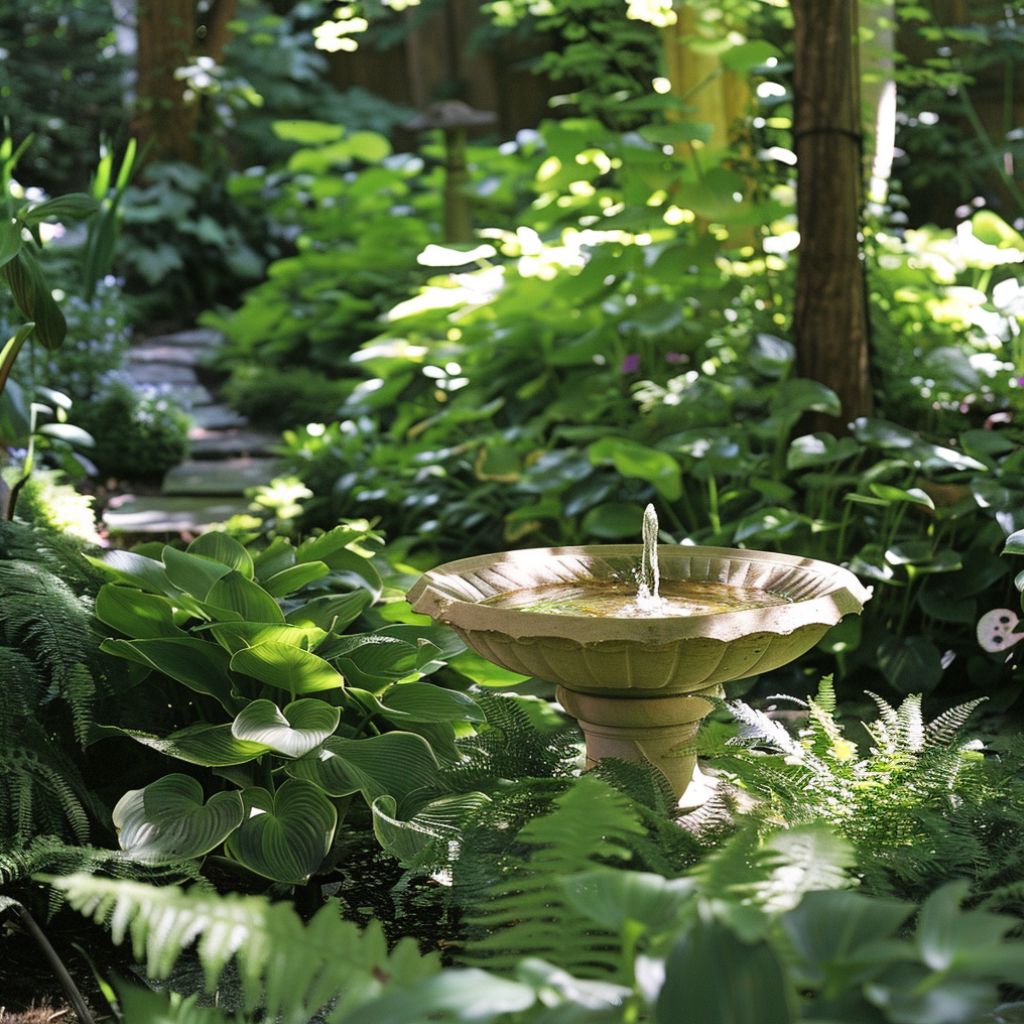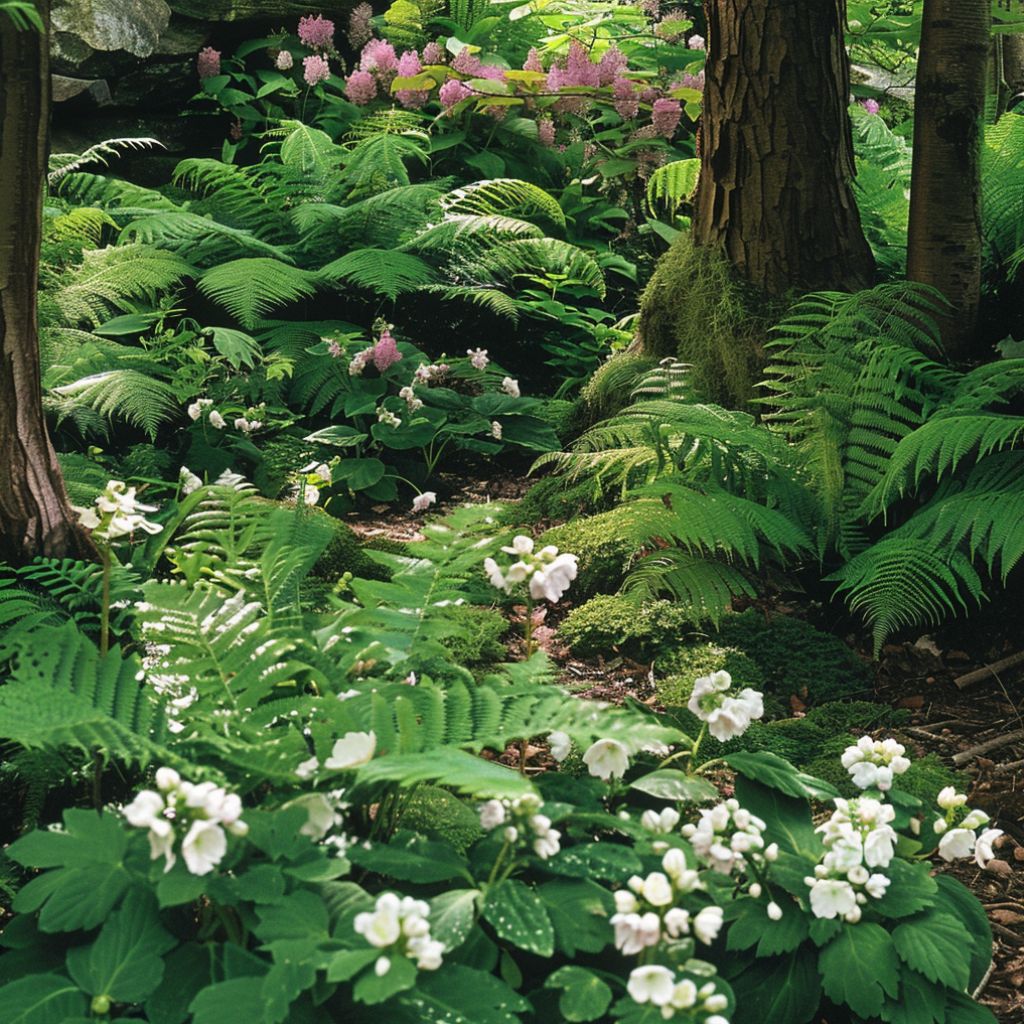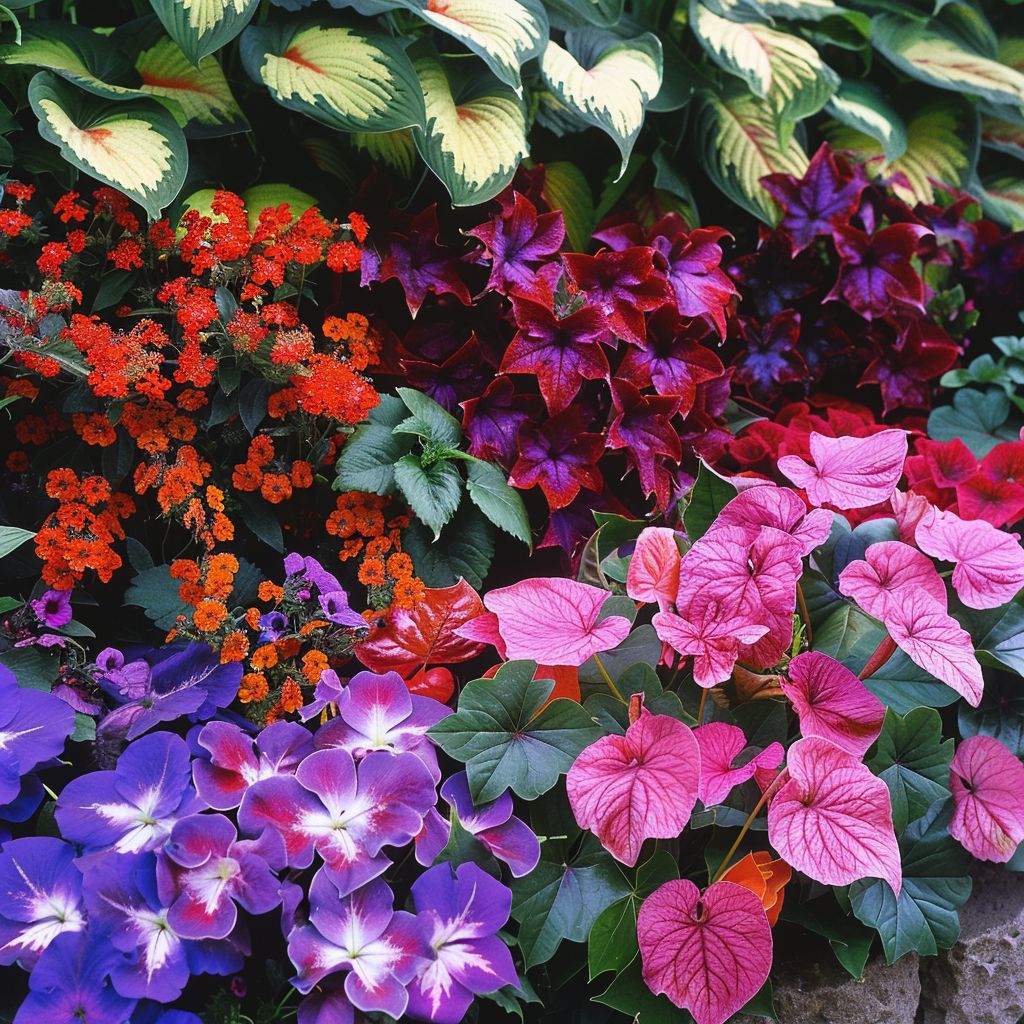Transforming your outdoor space into a lush shade garden can feel like a daunting task, especially if you’re dealing with low-light conditions. But don’t let a lack of sunlight deter you! By applying effective landscaping strategies, you can create a shade garden that is just as vibrant and inviting as its sun-drenched counterparts, offering a serene retreat filled with unique textures and colors.
Understanding Shade Gardening
Shade gardening creates a vibrant outdoor space even in limited light. You can cultivate beautiful areas rich with diverse plants, colors, and textures that offer tranquility.
Types of Shade

Shade types include Part Shade, Dappled Shade, Summer Shade, Bright Shade, and Full Shade. Each category affects plant choice and care. For example, Part Shade offers 4-6 hours of sunlight daily, making it perfect for plants like day lilies and garden phlox. Dappled Shade involves light filtered through leaves, suiting plants that thrive in indirect light.
Benefits of a Shade Garden
Shady area plants provide ecological benefits by supporting various wildlife. They also offer cooler spots during hot months and reduce water evaporation in the soil. Additionally, these gardens create a serene atmosphere, enhancing overall outdoor enjoyment.
Planning Your Shade Garden
Planning a shade garden involves understanding the space and selecting suitable plants. Follow these guidelines for a successful garden.
Assessing Your Space
Determine shade density by documenting how much sun your area receives throughout the day. Take photos at different times and repeat every few months to track seasonal changes. Evaluate soil conditions, including moisture and pH levels. Amending with organic materials can improve plant growth.
Choosing the Right Plants
Select plants that thrive in shade, including annuals, perennials, shrubs, and small trees. Mix different textures and colors to create visual interest. Look for plants with various foliage types to add depth and richness to the garden.
Design Tips for Shade Gardens
Designing a shade garden requires understanding your space and the plants that thrive in it. Use these tips to create a vibrant and engaging environment.
Incorporating Color and Texture
Mix plants with varying foliage colors and textures. Combine vibrant flowers with rich greens for contrast. Incorporating variegated leaves adds visual interest and depth to your garden.
Using Hardscape Elements

Incorporate hardscape elements such as paths, benches, and decorative stones into your stone-based front yard plans. Opt for natural materials that harmonize with the surrounding plants. These features provide structure and create inviting spaces within your garden.
Adding Art and Accessories

Enhance your shade garden with sculptures, birdbaths, or decorative pots. Choose accessories that resonate with your personal style and theme. Strategic placement creates focal points and draws attention to your plant selections.
Plant Selection for Shade
Selecting the right plants for a shade garden enhances its beauty and function. Consider both trees and shrubs as well as perennials when planning your garden layout.
Best Perennials for Shade

Ferns thrive in shaded areas and bring lush greenery. Hellebores, or Lenten roses, add charm with their early blooms. Foamflowers and wild ginger also flourish in shade, providing texture and color that brighten your garden.
Annuals and Vines for Color

Select annuals like impatiens or coleus to infuse vibrant colors into shaded areas. Incorporate climbing plant solutions, such as climbing hydrangeas, to add a striking vertical element. These plants provide seasonal charm and help keep your shade garden lively throughout the year.
Maintenance of Shade Gardens
Maintaining a shade garden involves careful attention to various factors, such as watering and soil care, pests, and weeds. Focusing on these key areas supports a healthy garden and promotes plant longevity.
Watering and Soil Care
Soil fertility often requires supplemental fertilization. Shade gardens typically retain moisture longer, cutting down on the need for frequent watering. Utilizing organic mulch like shredded leaves or grass clippings helps with moisture retention and weed suppression.
Managing Pests and Weeds
Monitoring for pests and weeds is crucial in shade gardens. Encourage beneficial insects and use organic methods for pest control. Regular weeding minimizes competition for nutrients, ensuring your plants thrive without interference.
Inspiration for Your Shade Garden
Explore ideas to enhance your shade garden with vibrant colors and creative touches. Use reliable plants that thrive in shade alongside elements for added personality.
Creative Layout Ideas

Mix various perennials to create a lively display with different textures and colors. Incorporate annuals for additional vibrant accents in your garden. Utilize containers to fill gaps during the summer, featuring plants like New Guinea impatiens and coleus.
Real-Life Shade Garden Examples
Visit local parks or botanical gardens to gather insights from existing shade gardens. Observe how different plant combinations, hardscape elements, and accessories can elevate a shaded space into a striking outdoor setting.
Up next:
